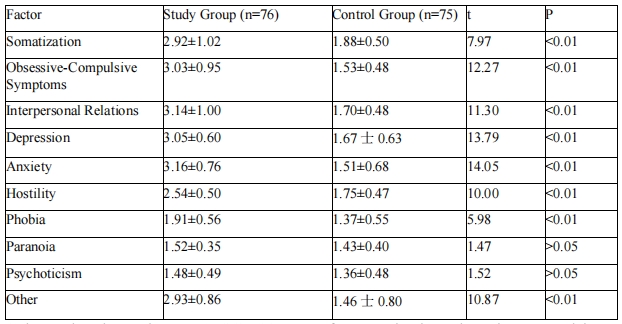
Published 12-11-2024
Keywords
- Internet addiction,
- Adolescents,
- Mental health,
- Coping strategies,
- Personality types
- Time management tendencies ...More
Copyright (c) 2024 The Young Thinker's Review

This work is licensed under a Creative Commons Attribution-NonCommercial 4.0 International License.
How to Cite
Abstract
Objective: To explore the mental health status, coping styles, personality traits, and time management tendencies of adolescents with internet addiction, providing a theoretical basis for the mental and physical health education of these youth. Methods: A total of 2,784 students were screened for internet addiction using an internet addiction test questionnaire. Of the 80 identified internet addicts, 77 students were designated as the study group, and 80 students without a tendency towards internet addiction were selected as the control group. Both groups were evaluated using the Symptom Checklist-90 (SCL-90), the Simplified Coping Style Questionnaire (SCSQ), the Eysenck Personality Questionnaire (EPQ), and the Adolescent Time Management Disposition Scale (ATMD). Results: The rate of internet addiction among adolescents was 3.1%. Except for the paranoid and psychotic factor scores, the study group's SCL-90 scores in the remaining eight factors were significantly higher than those of the control group (P<0.01). The active coping dimension score of the SCSQ was significantly lower in the study group than in the control group (P<0.01), while the passive coping dimension score was significantly higher (P<0.01). The introversion and neuroticism dimension scores of the EPQ were significantly lower in the study group than in the control group (P<0.01), while the psychoticism dimension score was significantly higher (P<0.01). The ATMD scores for time value, time monitoring, and time efficacy were all significantly lower in the study group than in the control group (P<0.01). Conclusion: Adolescents with internet addiction have poor mental health status, a more negative problem-solving approach, introverted and reclusive personality types, and unreasonable time management.
References
- Tsitsika A, Janikian M, Schoenmakers TM, et al. Internet addictive behavior in adolescence: a cross-sectional study in seven European countries [J]. Cyberpsychol Behav Soc Netw, 2014, 17(8): 528.
- Fan F, Su L, Cao F, et al. Preliminary development and validation of a prediction questionnaire for adolescent internet addiction [J]. Chinese Journal of Clinical Psychology, 2008, 16(1): 1.
- Pan Q, Xiao S. Advances in the study of pathological internet use [J]. Chinese Journal of Clinical Psychology, 2002, 10(3): 237.
- Xie Y. Preliminary study on the reliability and validity of the Simplified Coping Style Questionnaire [J]. Chinese Journal of Clinical Psychology, 1998, 6(2): 114.
- Huang X, Zhang Z. The development of the Adolescent Time Management Disposition Scale [J]. Acta Psychologica Sinica, 2001, 33(4): 338.
- Li Y, Liu H. Common problems and solutions in the questionnaire survey process [J]. Educational Research and Experiment, 2006, 24(2): 61.
- Huang XQ, Li MC, Tao R. Treatment of internet addiction [J]. Curr Psychiatry Rep, 2010, 12(5): 462.
- Wolfling K, Beutel ME, Dreier M, et al. Treatment outcomes in patients with internet addiction: a clinical pilot study on the effects of a cognitive-behavioral therapy program [J]. Biomed Res, 2014, 2014: 1.
- Xu J, Shen LX, Yan CH, et al. Personal characteristics related to the risk of adolescent internet addiction: a survey in Shanghai, China [J]. BMC Public Health, 2012, 12: 1106.
- Ko CH, Liu TL, Wang PW, et al. The exacerbation of depression, hostility, and social anxiety in the course of internet addiction among adolescents: a prospective study [J]. Compr Psychiatry, 2014, 55(6): 1377.
- Xu S, Wang D, Lin M, et al. A study on family care and coping styles of middle school students with internet addiction [J]. Zhejiang Preventive Medicine, 2010, 22(8): 4.
- Zhi X, Wang C, Wang C, et al. Analysis of coping styles, social support, and parenting styles among adolescents with internet addiction [J]. Chinese Journal of School Health, 2013, 34(4): 426.
- Tang J, Yu Y, Du Y, et al. Prevalence of internet addiction and its association with stressful life events and psychological symptoms among adolescent internet users [J]. Addict Behav, 2014, 39(3): 744.
- Dai W, Shi J, Zhou C, et al. A study on the current situation of internet addiction and its correlation with personality factors in primary and secondary schools in Nantong [J]. Journal of Clinical Psychosomatic Diseases, 2014, 20(2): 56.
- Liu H, Yang N. A study on the relationship between college students' internet addiction, time management tendency, and anxiety morphology [J]. Social Psychological Science, 2012, 27(12): 92.
- Ma Y, Meng Y, Xu J. The relationship between college students' time management tendency and learning burnout: the mediating role of self-efficacy [J]. Modern Preventive Medicine, 2014, 41(17): 3161.
- Wang H, Zhou X, Lu C, et al. Problematic internet use in high school students in Guangdong province, China [J]. PLoS One, 2011, 6(5): e19660.
